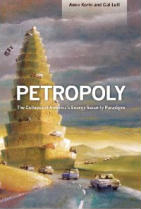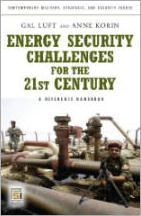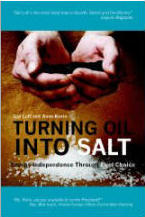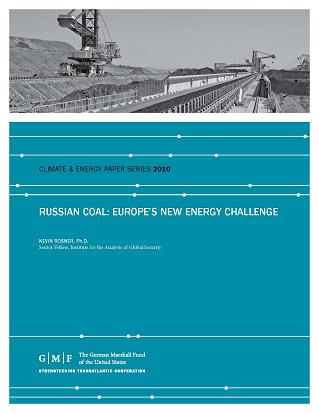Natural gas is not a toxic substance when inhaled. However, exposure to high levels depletes the oxygen level in the body, which gives rise to cognitive problems. In the earlier stages, you may experience dizziness, headaches and blurred vision. Continued exposure may result in memory loss, disorientation and poor judgment. In severe cases, you may begin to hallucinate. This is what we are now observing in the Eastern Mediterranean, which has recently attracted increased industry and international attention following a series of major natural gas discoveries offshore Israel and Cyprus.
The Eastern Mediterranean holds, without question, large hydrocarbon resources even though the countries in the region, excluding Egypt, have been quite slow in finding them. A handful of modest gas discoveries in 1999 and 2000 in offshore Israel and Gaza accelerated exploration efforts and promoted the acquisition of geophysical data throughout the region.
It was three large scale discoveries in the East Mediterranean since 2009 (Tamar and Leviathan fields in 2009 and 2010 offshore Israel; Cyprus-A in 2011 off the coast of southern Cyprus) that have opened up a new deepwater province and hence the so-called gas bonanza.
When some other recently discovered but smaller sized fields are added to the above mentioned fields, total discovered natural gas resources in the Levant Basin at present amount to over 1.1 trillion cubic meters (tcm). And yet, the region remains one of the world’s most under-explored or unexplored areas and has good prospects for additional gas, and perhaps oil, reserves. A recent United States Geological Survey (USGS) assessment confirms this.
In March 2010, the USGS released an assessment concerning the technically recoverable undiscovered oil and gas resource potential of the Levant Basin Province which covers mainly offshore territories including the Gaza Strip, Israel, Lebanon, Syria and Cyprus. The study estimated a potential of 1.7 billion barrels of oil and 3.45 tcm of natural gas in the area.
Two months later, the USGS issued another assessment. It was for the Nile Delta Basin province, which corresponds to the Nile Delta and Mediterranean Sea sectors of Egypt. This assessment indicates that the undiscovered gas potential in the mentioned area is three times bigger than the current level of gas reserves in Egypt.
The above mentioned discoveries and the USGS assessments have not only significantly augmented hopes for large natural gas potential in the East Mediterranean but also made it a fast rising favorite for international oil and gas companies if only because the potential prize seems too big to ignore. Converting these head turning discoveries and undiscovered potential into real money, pronounced in 12 to 13 digit figures, have caused dizziness. So, the symptoms of natural gas poisoning have started.
Cyprus
In the Republic of Cyprus the dizziness started with a head turning Christmas gift on 28 December 2011 with the discovery of a large offshore gas field. When the country opened its second licensing round in February 2012 the media focused on the Cypriot officials’ estimate of a potential 1700 bcm of natural gas lying under deep Mediterranean waters. Although this estimate is based on the interpretation of geophysical data it was large enough to attract attention. Cyprus received 15 bids (10 consortia and 5 individual companies) from 15 countries for 9 blocks out of 12 offered. While the discussions about the country’s debt mess was heating up the authorities awarded 5 blocks to French, Italian and Korean companies.
In the Republic of Cyprus the dizziness started with a head turning Christmas gift on 28 December 2011 with the discovery of a large offshore gas field. When the country opened its second licensing round in February 2012 the media focused on the Cypriot officials’ estimate of a potential 1700 bcm of natural gas lying under deep Mediterranean waters. Although this estimate is based on the interpretation of geophysical data it was large enough to attract attention. Cyprus received 15 bids (10 consortia and 5 individual companies) from 15 countries for 9 blocks out of 12 offered. While the discussions about the country’s debt mess was heating up the authorities awarded 5 blocks to French, Italian and Korean companies.
Israel
Israel never lost hope of finding its own hydrocarbon reserves even after over 60 years of fruitless searching and cost in the hundreds of millions of dollars for drilling some 500 wells onshore and offshore. All wells drilled through 1999 either encountered oil and gas in non-commercially viable quantities or came up dry. However, five modest natural gas discoveries in 1999 and 2000 (Noa, Or, Mari-B and Nir fields offshore Israel, and Gaza Marine field offshore Gaza Strip) raised hopes. Discovery of two large gas fields (Tamar in 2009; Leviathan in 2010) changed everything. These fields were classified as the world’s largest deepwater gas discoveries between 2001 and 2010. Further discoveries, albeit small in size (Dalit in 2009, Dolphin in 2011, Tanin and Shimshon in 2012), pointed in the direction that Moses was indeed right that Israel was the promised land.
These discoveries combined with announcements for further large prospects made all so dizzy that downward revisions to Tannin, Dolphin and Shimshon fields (from a total of 113 bcm to 48 bcm) in 2012 were all but forgotten. Despite the fact that these fields will perhaps never be developed, upward revisions to Tamar and Leviathan fields since the early 2013 have kept the hype high. Although the yo-yo like developments in the past couple of years have been calling for conservative optimism, dizziness has prevailed.
For instance, the much publicized prospects for Sara and Myra in 2011 (with an estimated presence of 185 bcm gas) ended in disappointment a year later. No gas was found at Myra and Sarah. Both were abandoned due to a lack of commercially exploitable quantities. Similarly, the inflated expectation in mid-2012 for the Ishai prospect in the Pelagic license (estimated at 530 million barrels of oil and 150 bcm of gas) has been deflated by a downward revision in December 2012. The disappointment came in January 2013 when it was decided that it is not worthwhile to develop the reservoir. Meanwhile, Zion Oil & Gas announced in January 2013 that results from its Elijah-3 well failed to give enough evidence of hydrocarbons to continue developing the well.
Of course, the game is not over yet and the hype continues, in part due to energy illiteracy. For instance, a major Israeli newspaper ran an article on 1 May 2013 with the title, “Leviathan gas reserves raised again.” The article’s subtitle read “proven resources are now put at 18.9 trillion cubic feet (tcf)”. The first paragraph uses a different terminology: “the field’s proven reserves…”. Contrary to the terms “proven resources” and “proven reserves” used in the article- in reality the technical report on which the article was based-referred to “contingent resources” - the contingent resources of natural gas in Leviathan Reservoir (which were increased to 18.9 tcf (235 bcm) as of March 31, 2013.
Here it is important to note that contingent resources are defined as potentially recoverable but are less certain than proven reserves because some significant commercial or technical hurdles must be overcome prior to the eventual production of the volumes. Classification of the contingent resources as reserves depends on approval of a development and commercialization plan. There is no certainty that it will be commercially possible to produce any percentage of contingent resources. The term reserves, on the other hand, represents commercially recoverable resources which have been justified for development.
Lebanon’s gas hallucination
If definitions are neglected, people start mixing apples with oranges to such an extent that seismic survey interpretations on paper are confused with actual discoveries. This is what we are witnessing in Lebanon.
Although estimates for Lebanon’s gas potential are based on 2- and 3-dimensional seismic surveys and range between 700 bcm and 2000 bcm not a single well has been drilled in Lebanese waters yet. Submitting bids for Lebanon’s first offshore licensing round started on 2 May 2013. A month ago, the government prequalified 46 companies. If all goes well, contract awards will take place in March 2014 and first exploration work(s) will start in 2015. If we assume that gas is discovered by the drill bit within a year, and further assume that it is available in indeed commercial quantities, then at least 3-4 years will be needed for the development of the field. This means that it is premature to expect any gas export earnings before early in the coming decade.
Nevertheless, news headlines like “Oil Discovery in Northern Lebanese Waters,” “New Oil, Gas Reserves Discovered off Northern Lebanon,” and “Vast Reserves of Oil and Gas Found off the Coast of Lebanon” are not uncommon. More important is the Energy Minister Gebran Bassil’s most quoted statement which appeared in The Daily Star on 16 February 2013: “This is the moment we were waiting for. This is the opportunity which we have always missed. This dream has become reality.” In addition, the hype plastered nowadays on billboards in Beirut streets promising a modern army, high-speed rail network, free healthcare and education because 'Lebanon has now oil' should remind us of sayings like “don't sell the skin before you hunt the bear” or “don’t count your chickens before they hatch.”
Israel never lost hope of finding its own hydrocarbon reserves even after over 60 years of fruitless searching and cost in the hundreds of millions of dollars for drilling some 500 wells onshore and offshore. All wells drilled through 1999 either encountered oil and gas in non-commercially viable quantities or came up dry. However, five modest natural gas discoveries in 1999 and 2000 (Noa, Or, Mari-B and Nir fields offshore Israel, and Gaza Marine field offshore Gaza Strip) raised hopes. Discovery of two large gas fields (Tamar in 2009; Leviathan in 2010) changed everything. These fields were classified as the world’s largest deepwater gas discoveries between 2001 and 2010. Further discoveries, albeit small in size (Dalit in 2009, Dolphin in 2011, Tanin and Shimshon in 2012), pointed in the direction that Moses was indeed right that Israel was the promised land.
These discoveries combined with announcements for further large prospects made all so dizzy that downward revisions to Tannin, Dolphin and Shimshon fields (from a total of 113 bcm to 48 bcm) in 2012 were all but forgotten. Despite the fact that these fields will perhaps never be developed, upward revisions to Tamar and Leviathan fields since the early 2013 have kept the hype high. Although the yo-yo like developments in the past couple of years have been calling for conservative optimism, dizziness has prevailed.
For instance, the much publicized prospects for Sara and Myra in 2011 (with an estimated presence of 185 bcm gas) ended in disappointment a year later. No gas was found at Myra and Sarah. Both were abandoned due to a lack of commercially exploitable quantities. Similarly, the inflated expectation in mid-2012 for the Ishai prospect in the Pelagic license (estimated at 530 million barrels of oil and 150 bcm of gas) has been deflated by a downward revision in December 2012. The disappointment came in January 2013 when it was decided that it is not worthwhile to develop the reservoir. Meanwhile, Zion Oil & Gas announced in January 2013 that results from its Elijah-3 well failed to give enough evidence of hydrocarbons to continue developing the well.
Of course, the game is not over yet and the hype continues, in part due to energy illiteracy. For instance, a major Israeli newspaper ran an article on 1 May 2013 with the title, “Leviathan gas reserves raised again.” The article’s subtitle read “proven resources are now put at 18.9 trillion cubic feet (tcf)”. The first paragraph uses a different terminology: “the field’s proven reserves…”. Contrary to the terms “proven resources” and “proven reserves” used in the article- in reality the technical report on which the article was based-referred to “contingent resources” - the contingent resources of natural gas in Leviathan Reservoir (which were increased to 18.9 tcf (235 bcm) as of March 31, 2013.
Here it is important to note that contingent resources are defined as potentially recoverable but are less certain than proven reserves because some significant commercial or technical hurdles must be overcome prior to the eventual production of the volumes. Classification of the contingent resources as reserves depends on approval of a development and commercialization plan. There is no certainty that it will be commercially possible to produce any percentage of contingent resources. The term reserves, on the other hand, represents commercially recoverable resources which have been justified for development.
Lebanon’s gas hallucination
If definitions are neglected, people start mixing apples with oranges to such an extent that seismic survey interpretations on paper are confused with actual discoveries. This is what we are witnessing in Lebanon.
Although estimates for Lebanon’s gas potential are based on 2- and 3-dimensional seismic surveys and range between 700 bcm and 2000 bcm not a single well has been drilled in Lebanese waters yet. Submitting bids for Lebanon’s first offshore licensing round started on 2 May 2013. A month ago, the government prequalified 46 companies. If all goes well, contract awards will take place in March 2014 and first exploration work(s) will start in 2015. If we assume that gas is discovered by the drill bit within a year, and further assume that it is available in indeed commercial quantities, then at least 3-4 years will be needed for the development of the field. This means that it is premature to expect any gas export earnings before early in the coming decade.
Nevertheless, news headlines like “Oil Discovery in Northern Lebanese Waters,” “New Oil, Gas Reserves Discovered off Northern Lebanon,” and “Vast Reserves of Oil and Gas Found off the Coast of Lebanon” are not uncommon. More important is the Energy Minister Gebran Bassil’s most quoted statement which appeared in The Daily Star on 16 February 2013: “This is the moment we were waiting for. This is the opportunity which we have always missed. This dream has become reality.” In addition, the hype plastered nowadays on billboards in Beirut streets promising a modern army, high-speed rail network, free healthcare and education because 'Lebanon has now oil' should remind us of sayings like “don't sell the skin before you hunt the bear” or “don’t count your chickens before they hatch.”
When combined with dizziness, one of natural gas’ poisoning symptoms, energy illiteracy, may lead to other symptoms such as blurred vision, disorientation and poor judgment. For instance an Israeli government committee, known as the Tzemach Committee, is basing its recommendations for Israel’s gas export policy partly on a mixture of hype and hope on the one hand, and reserves and prospective resources on the other. This may lead to decisions with serious consequences or implications.
Discoveries make sense if reserves in discovered fields are converted into production capacity. The question whether these reserves find their way to the domestic and/or international markets in a timely manner necessitates the development of discovered fields. Companies will carry on costly exploration and field development endeavors if they see the ability to commercialize their discoveries with a favorable rate of return. Much will depend on the gas price the companies will receive in selling natural gas to the domestic market, the availability of export options and transport means, stability in the countries’ regulatory, fiscal and gas policies as well as in its political atmosphere, etc. In other words, serious companies do not make investment decisions under conditions of dizziness and illusion.
Geopolitical challenges
Large natural gas discoveries since January 2009 and the prospect of substantial hydrocarbon resources waiting to be tapped beneath the eastern Mediterranean waters offer big opportunities in terms of energy security, economic prosperity and regional cooperation. However, they also present enormous technical, administrative, security, legal and political challenges with geo‐political implications.
Instead of forming a common denominator for good, natural gas has become a main component of the geopolitical headache in one of the most entangled political regions on Earth. Heightened political tensions and conflicts over the unresolved demarcation of maritime borders are arguably the most sensitive issue.
Resolving differences over maritime boundaries through bilateral or multilateral negotiations, or mutually-agreed arbitration is crucial to lessening this headache. Vital mutual interests can help overcome differences by taking a pragmatic approach for cooperation. A genuine mechanism that would lead to joint exploitation of hydrocarbons resources may offer an interim solution to create interdependencies for paving the way for cooperation in the region. However such opportunities do not presently exist and reaching substantive compromises will be unlikely unless Lebanon and Israel as well as Turkey and the Republic of Cyprus talk to each other.
Natural gas is not a toxic substance when inhaled. However, in a political environment it can become toxic and hence increase the challenges a region already faces and shrink the room for optimism. In such a case it may fuel confrontations and add anxieties to an already volatile region. Provocative actions can only violate the spirit of talks and aggravate tensions. This in fact would be a serious threat to the stability and security of the whole Middle East. Lack of regional stability will only have negative commercial implications and slow the pace of the extraction and transport of eastern Mediterranean gas resources.
There is no doubt that energy will be a dominant factor in the future of the countries in the eastern Mediterranean. Whether it will be a force that promotes stability and prosperity or one that stirs up conflict is yet to be seen.
The road ahead
What the future holds is hard to predict but if not managed carefully and with wisdom currently pursued myopic policies and distrust will further complicate finding the common ground needed to turn this notoriously complex region into a positively booming one.
What the future holds is hard to predict but if not managed carefully and with wisdom currently pursued myopic policies and distrust will further complicate finding the common ground needed to turn this notoriously complex region into a positively booming one.
What is needed to help avoid turning controversies into possible cooperation is for all the players and stakeholders to get more oxygen. This could be in the form of a balanced but pragmatic cooperative approach through a constructive and frank dialogue between the countries in the region and external powers. Without more oxygen myopic policies pursued by the region’s politicians without regard for their consequences will prevail.
Contributor Sohbet Karbuz is Director of Hydrocarbons at OME in Paris, France



 Archive
Archive 










